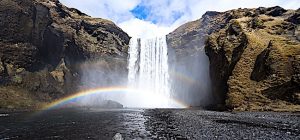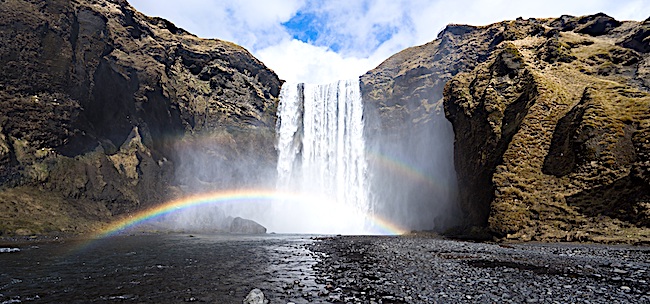
The Torah, in this week’s reading, describes the rainbow as becoming the symbol of God’s covenant with the humankind, that the world will not be destroyed by another flood. The appearance of the rainbow in the narrative of Noach and his emergence from the ark does not mean that the rainbow was created then. According to rabbinic tradition and the unchanging laws of nature, the rainbow existed from the time of original creation itself. What is significant is that the Torah points out to Noach that the rainbow now has a great significance to humanity and is not to be observed and thought of as being merely another of the great many phenomena that we call nature.
Rather, when human beings see a rainbow, they should be reminded of God’s covenant with us and how we are all descended from one family that was the progenitor of humankind, as we know it today. One of the interesting things about the rainbow is that when Jews view it, they are bidden to recite a blessing. This is meant to teach us that the wonders of nature are constant reminders of our relationship to our Creator and our obligations that that entails. Because of this, Jewish tradition also teaches us that we are not to stare at length or directly at a rainbow because the rainbow represents God’s presence in our world and should not be subject to prolonged stares.
This lesson is true in all areas of human life and in our relationship to nature. Pantheism promulgated the idea that nature itself is God. That is a misrepresentation of the true relationship between the Creator and what was created. Judaism teaches us that we are to see the wonders of the planet that we inhabit as part of God’s scheme in creating the world and that we react to seeing those wonders through the prism of the Torah that the Lord has granted to Israel.
Viewing nature without Torah insight and background is again reverting to pantheism. That is the meaning of the Mishnah in Avot that one should not interrupt one’s study of Torah in order to admire a beautiful phenomenon of nature. Nature is to be viewed through knowledge and understanding of Torah and not as something that is distinct and unrelated to Torah and its values.
Seeing nature devoid of any moral backdrop diminishes the wonders of nature and the grandeur of the world in which we live. A rainbow without the message of the Lord to Noach loses much of its beauty and a great deal of its meaning. In the Talmud we find that great and noble people were themselves compared to the rainbow, because in a noble person one can also link the nature of the Creator that fashions that person. Everything in life and in nature, as well as our judgment of human beings should always be viewed from the perspective of Torah and eternity.
Shabbat shalom
Rabbi Berel Wein


